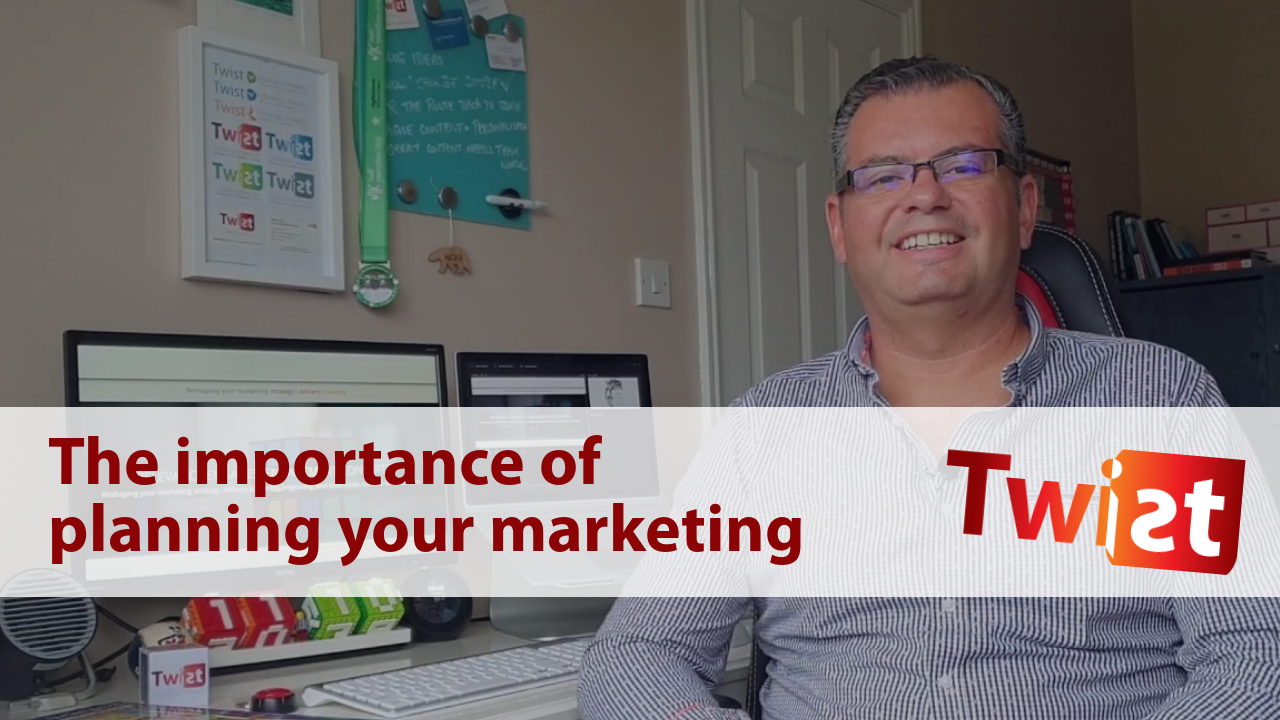Twist Blog

The Importance of Planning Your Marketing
Often when people think about their marketing their first thoughts are what do I send?
- Who am I gonna send that to?
- How do I add extra content to Facebook?
- Do I need to do email?
- What’s this tik-tok thing?
Actually you need to start with your strategy and with your planning. Those are the foundation of any great marketing plan, and that’s the thing that’s going to really make the biggest difference to how you get results in the end.
To help highlight that I want to share with you one of my favourite quotes from Alice in Wonderland.
So are you sitting comfortably? Then we’ll begin…
So this is where Alice first meets the Cheshire Cat;
“Alice says ‘Cheshire Cat, would you tell me please which way I ought to go from here?’
And the cat replies ‘Well that depends a good deal on where you want to get to.’
And she says I don’t much care’
And he replies ‘Then it doesn’t matter which way you go.’ ”
For me that really highlights this need to have a very clear idea of your objectives, what you want from your business and to then start to fit that into your marketing strategy.
Now there’s a number of ways that you can start to break this down, one of the ways that we have here at Twist is a framework that’s based around ensuring relevancy and engagement. Fundamentally what it does is it breaks down a number of key considerations and steps for you to ask of yourself and of the business to start to build a plan together.
The first step is to start to look at what your business objective is and what do you want to achieve and what do you want the business to achieve?
The second step is to think about what are the key things that we offer:
- What’s our differentiation?
- What’s our USPS?
You’ll then start to put together a menu of topics that you could talk about. But the important thing here is that not all of those will be relevant to all of your customers and your prospects at the same time.
Then you need to start to think about what are those groups of customers and those prospects? How are they different? What are they trying to achieve?
You might say well…
- I’ve got prospects who’ve just become aware of us
- I’ve got someone who’s used us once
- I’ve got a group of customers who’ve used us multiple times
- I’ve got a group of customers that are starting to not use us.
And so actually by being able to create those clear views of the audience groups and your customers, then you can start to match the audience with the key message that’s relevant to them at that moment in time. And that then starts to give more relevant messaging for the consumer.
Once you’ve got to that point then you can start to ask what’s the best way of reaching that group of customers? Where will they they be?
That is what starts to define your channel.
How do I need to talk to them? What language do I need? What do I need to surface for them to meet their objectives? So you see that you’re really then starting to hone in on what they need, putting the customer and the prospect first based on what they require at that moment in time.
After that you can start to look at feedback and measuring your customer experience to understand whether what you think you’re giving your customers is what you’re actually giving, and if you want that experience to be different or better, then you’ve got a way of actually balancing that gap between where it is now and where you need to get it.
Hopefully that’s given you some idea of the framework that you can work to. If you need more details please do go to the website and if we can help anyway in your marketing strategy, your planning or the delivery or training of marketing then please do get in contact.




